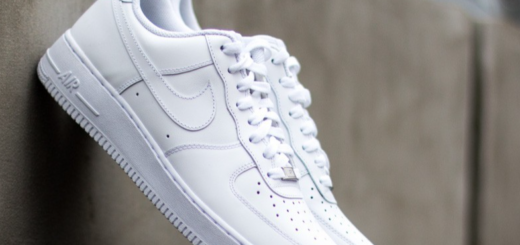Removing Candle Wax from Leather Shoes: A Practical Guide
Accidentally getting candle wax on your shoes can be frustrating, especially when the shoes are made of leather. Wax tends to adhere stubbornly to surfaces, and leather presents particular challenges when it comes to cleaning. Fortunately, with the correct approach and a little patience, even delicate leather footwear can be salvaged from wax spills.
The Incident: How the Shoes Got Waxed
At a formal evening event, I once found myself in an unfortunate situation. While moving around in a dimly lit outdoor setting, I brushed against a pitch torch and, without realizing, ended up with significant wax splashes on my bespoke leather shoes. The wax had landed on the toes and sides of both shoes and had even soaked into the heel area of the right shoe. By the time I returned home later that evening, the wax had hardened, forming unsightly blotches across the surfaces.

Conventional Methods Aren’t Always Ideal
When dealing with candle wax on fabric, it’s easy to find tips online—methods like freezing the garment to crack off hardened wax or using a hot iron with absorbent paper to melt and soak it up. These methods work well for textiles, and I even used the iron-and-filter method successfully on my trousers that night. However, leather reacts differently to heat and cold, so using an iron or freezing your shoes is not recommended. The unique properties of leather demand a gentler, more controlled solution.
A Safe and Effective Solution: The Hair Dryer Technique
The most effective way I found to deal with the wax on leather was using a hair dryer. By using controlled heat, it’s possible to soften the wax just enough to remove it without damaging the leather. Start with the hair dryer set to medium and direct the warm air at one section of wax at a time. As the wax softens, gently blot and lift it with clean paper towels.
Be cautious with the amount of heat applied; it’s better to apply less and add more as needed. Leather can tolerate brief exposure to moderate heat, especially if you’re attentive and work in short bursts. Avoid reusing the same paper towel across different areas to prevent spreading the wax. As the wax melts, it may also remove some of the existing shoe polish, so be prepared for some touch-up work later.
Dealing with Residual Stains
Even after removing the visible wax, you might notice some oily spots left behind. These are residues from the fatty substances in candle wax, which typically contains a blend of stearin and paraffin. To eliminate these leftover grease marks, use a cloth lightly dampened with pure heptane. This solvent can usually be found in hardware stores or well-stocked supermarkets.
Gently dab the stained area with the heptane cloth—do not soak the leather—and allow it to air dry. The heptane should dissolve the remaining waxy oils without harming the material. After this step, your shoes should be visually and texturally clean, free of any wax or greasy buildup.
Post-Cleaning Care and Restoration
After the wax is gone, the leather will need some attention to restore its original condition. The cleaning process, especially with heat and solvents, strips away protective layers of polish and moisture. Reapply shoe cream to nourish the leather, followed by a wax polish to reintroduce a protective sheen. This combination will not only improve the shoe’s appearance but also add a barrier against future spills or stains.
When I completed the process on my own shoes, they were nearly back to their original condition. A bit of pigment had been removed in the process, especially around the toes and heels, so I applied some tinted shoe cream to even out the color. With a little extra work, they were fully restored and looked as good as new.
Why Preventive Care Makes a Difference
One important takeaway from this experience is the value of regular shoe maintenance. Because my shoes had been well-treated with creams and polish beforehand, they had a protective layer that helped prevent the wax from penetrating deeply into the leather. Shoes that are not regularly maintained may absorb wax into their grain, making complete removal much harder or even impossible. Regular conditioning and polishing create a protective buffer that can make all the difference in saving your footwear from lasting damage.
What About Suede?
If you’re dealing with suede instead of smooth leather, the situation becomes more complex. Suede’s open-pored structure and delicate texture mean wax can sink deeper into the fibers, making it significantly harder to remove. I don’t have personal experience treating wax on suede, but I imagine it could be challenging to fully clean without leaving a mark. If anyone has successfully removed wax from suede, their input would be valuable to others facing the same issue.

When in Doubt, Consult a Professional
If you’re hesitant to use heat or solvents on your leather shoes, or if the wax damage seems severe, don’t hesitate to take them to a reputable cobbler. Professionals have access to specialized products and techniques that can often achieve results beyond what’s possible at home. It’s better to pay a little for expert care than to risk irreversible damage by experimenting with unfamiliar methods.
Final Results and Reflections
After thorough cleaning, conditioning, and a bit of color correction, my shoes were as good as new. The slight color variation that remained at first was easily resolved with additional layers of pigmented polish. The insides were also spotless once all the wax had been removed. The experience was a good reminder of both the unpredictability of accidents and the importance of knowing how to respond effectively. With the right tools and a bit of patience, even delicate leather shoes can be rescued from a wax spill.
Frequently Asked Questions
What is the best method to remove candle wax from leather shoes?
Using a hair dryer to gently heat the wax is the safest and most effective method. Once the wax softens, it can be carefully wiped away with paper towels.

Why shouldn’t you use an iron or freezer on leather shoes?
Leather is sensitive to extreme heat and cold. Using an iron or freezing the shoes can cause damage to the leather’s texture and structure, unlike textiles which can handle those treatments better.
What should you do after removing the wax?
Once the wax is removed, it’s important to clean any remaining grease stains with a cloth dampened in pure heptane. Afterward, restore the leather by applying shoe cream and polish to rehydrate and protect the material.
Can wax cause permanent damage to leather?
Yes, if the leather is untreated or not well-maintained, wax—especially its fatty acids—can seep into the grain and leave permanent marks. Regular shoe care helps prevent deep absorption.
Where can you find pure heptane?
Pure heptane is often available in hardware stores or larger grocery stores. It’s useful for dissolving wax residues and cleaning oily spots left behind.
Is this method safe for all types of leather shoes?
The hair dryer method works well on smooth leather shoes when used cautiously. However, it may not be suitable for delicate leathers like suede or nubuck, which require different care.
What should you do if unsure about cleaning the shoes yourself?
If you’re uncertain or if the shoes are particularly valuable or damaged, it’s wise to take them to a professional cobbler for expert treatment.







